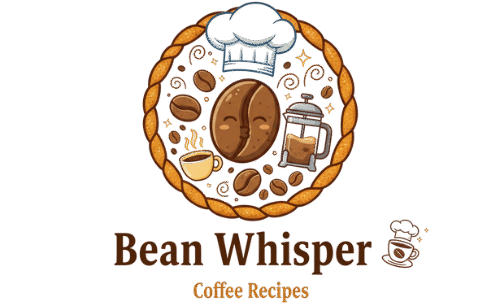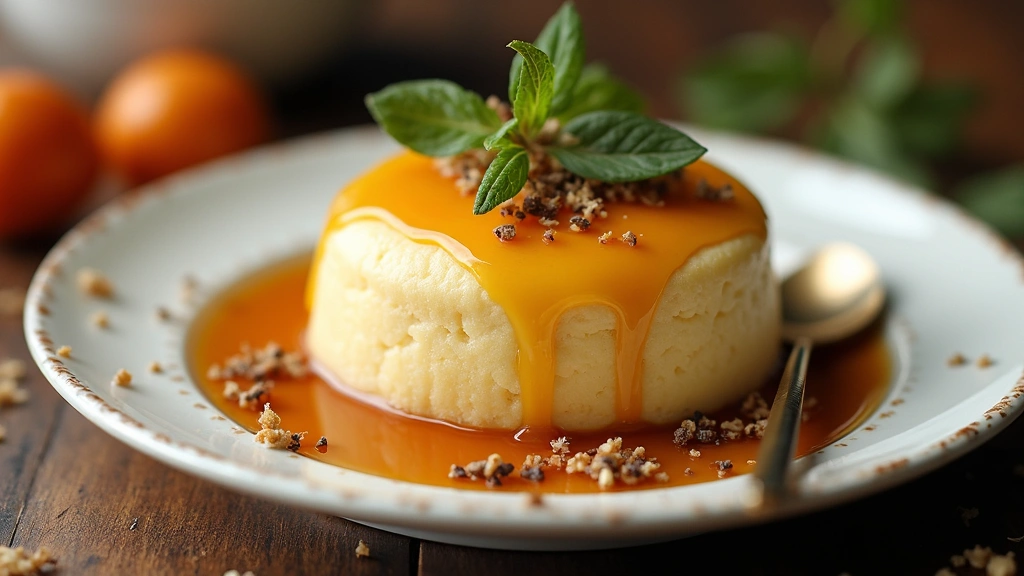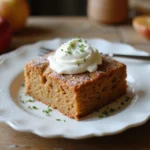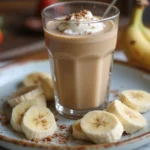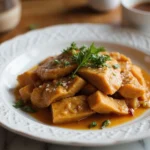This homemade vanilla syrup for coffee brings a touch of sweetness and warmth to your morning brew.
Its rich, aromatic flavor profile enhances the taste of your favorite coffee, making each sip a delightful experience.
I discovered this simple yet elegant recipe while experimenting with coffee pairings during cozy winter mornings at home.
Whether you’re looking to elevate your daily cup or impress guests with a unique coffee creation, this syrup is the perfect addition to your kitchen.
The History and Cultural Significance
• Vanilla syrup traces its origins to the 17th century when vanilla was first introduced to Europe from Mexico, becoming a popular flavoring.
• The dish evolved over the years as coffee culture expanded, with sweetening agents becoming essential for enhancing the bitter notes of coffee.
• In many cultures, sweetened coffee drinks are served during social gatherings, symbolizing hospitality and warmth to guests.
• While many variations of vanilla syrup exist, the authentic version remains true to the natural flavors of vanilla beans and sugar.
Recipe Overview
Nutritional Information (per serving)
Ingredients
Essential Equipment Guide
Medium Saucepan: This is crucial for heating the syrup ingredients evenly. A heavy-bottomed pan helps prevent burning, and a size that holds at least 2 quarts is ideal to allow for bubbling.
Measuring Cups and Spoons: Accurate measurements are vital for the right balance of flavors. Use a set that includes both liquid and dry measurements to ensure precision.
Fine Mesh Strainer: This tool is necessary for removing any solid particles from the syrup, ensuring a smooth texture. Look for one with a sturdy handle and fine mesh to catch even the smallest bits.
Preparation Methods
Infusing Flavors: Infusion is the technique of steeping ingredients to extract their essence. In this recipe, the vanilla bean is split and simmered with sugar and water to bring out its fragrant oils. Be sure to allow enough time for the flavors to meld.
Simmering: This method involves cooking ingredients over low heat until they break down or blend together. For the syrup, keep the heat low to avoid boiling too vigorously, which can lead to caramelization.
Straining: Straining separates solids from liquids, ensuring a smooth final product. Use a fine mesh strainer to catch any vanilla pod remnants or undissolved sugar.
Step 1: Gather Ingredients

Begin by assembling all your ingredients on a clean countertop.
Make sure you have granulated sugar, water, vanilla extract, and a whole vanilla bean.
This preparation ensures you have everything at hand for a smooth cooking process.
Double-check that your measuring tools are ready to use.
Step 2: Prepare Vanilla Bean

Take the vanilla bean and slice it lengthwise with a sharp knife.
This exposes the tiny seeds inside, which will infuse the syrup with intense flavor.
Ensure you scrape out the seeds carefully to avoid losing any of the precious flavor.
Set the bean and seeds aside for later use.
Step 3: Combine Ingredients

In a medium saucepan, combine the granulated sugar and water.
Stir well to dissolve the sugar before heating.
This mixture will form the base of your syrup.
Make sure there are no sugar granules left undissolved before proceeding.
Step 4: Add Vanilla
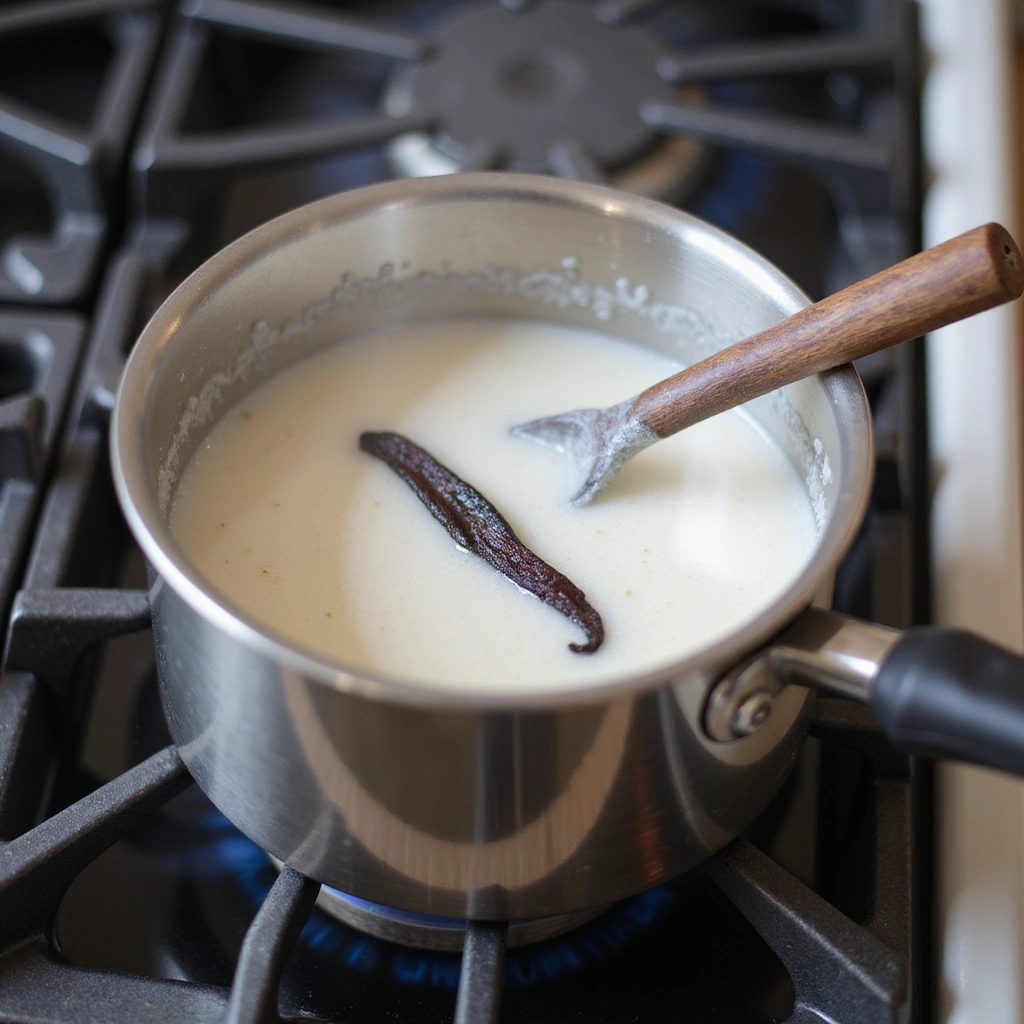
Once the sugar has dissolved, add the split vanilla bean and its scraped seeds to the saucepan.
Stir the mixture to distribute the vanilla evenly throughout.
This step is crucial for ensuring the syrup has a robust flavor.
Keep an eye on the mixture as it begins to heat.
Step 5: Simmer the Syrup
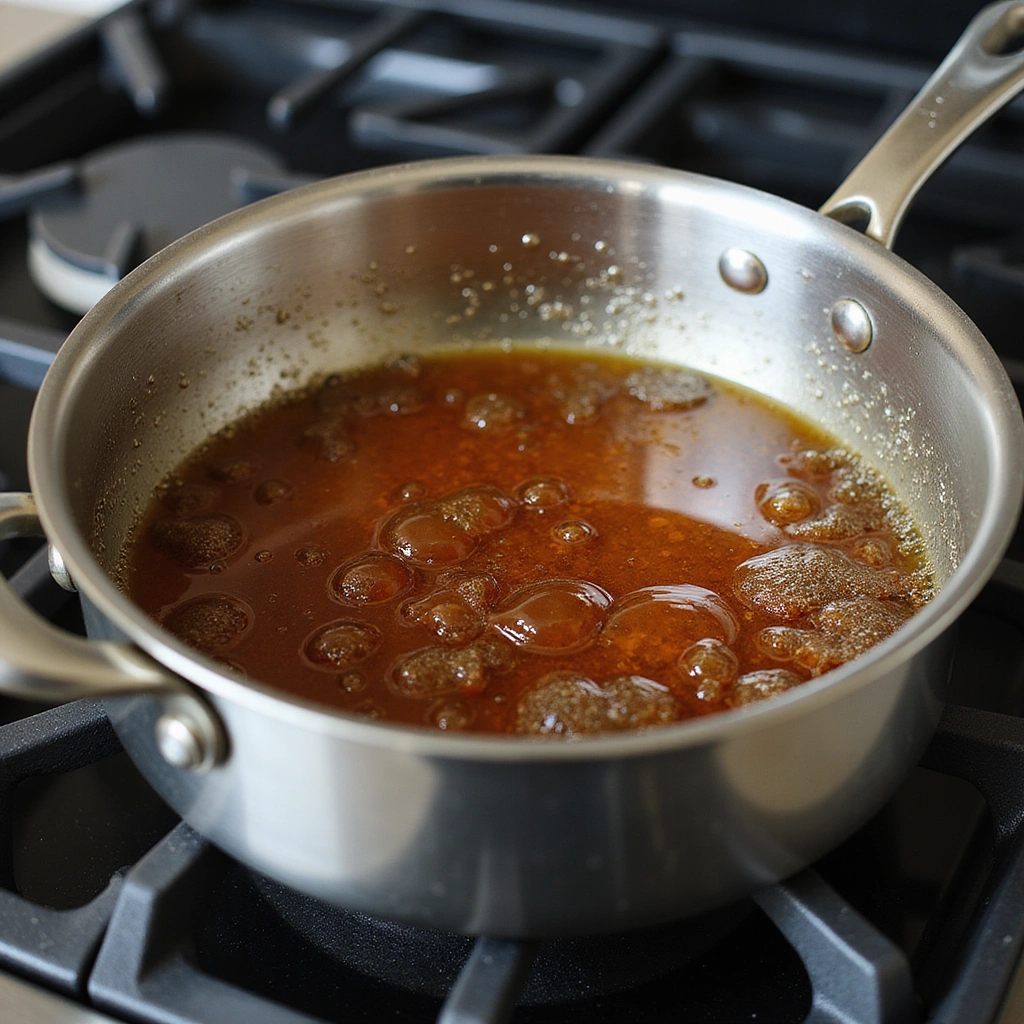
Bring the mixture to a gentle simmer over medium heat.
Allow it to simmer for about 5-7 minutes, stirring occasionally.
This process will help the flavors meld and intensify.
Watch for small bubbles forming, indicating the syrup is simmering properly.
Step 6: Remove from Heat

After simmering, remove the saucepan from heat and let it cool slightly.
This will help the syrup thicken a bit as it cools.
Make sure to allow it to cool for at least 10 minutes before straining.
This step ensures safety when handling the hot syrup.
Step 7: Strain the Syrup
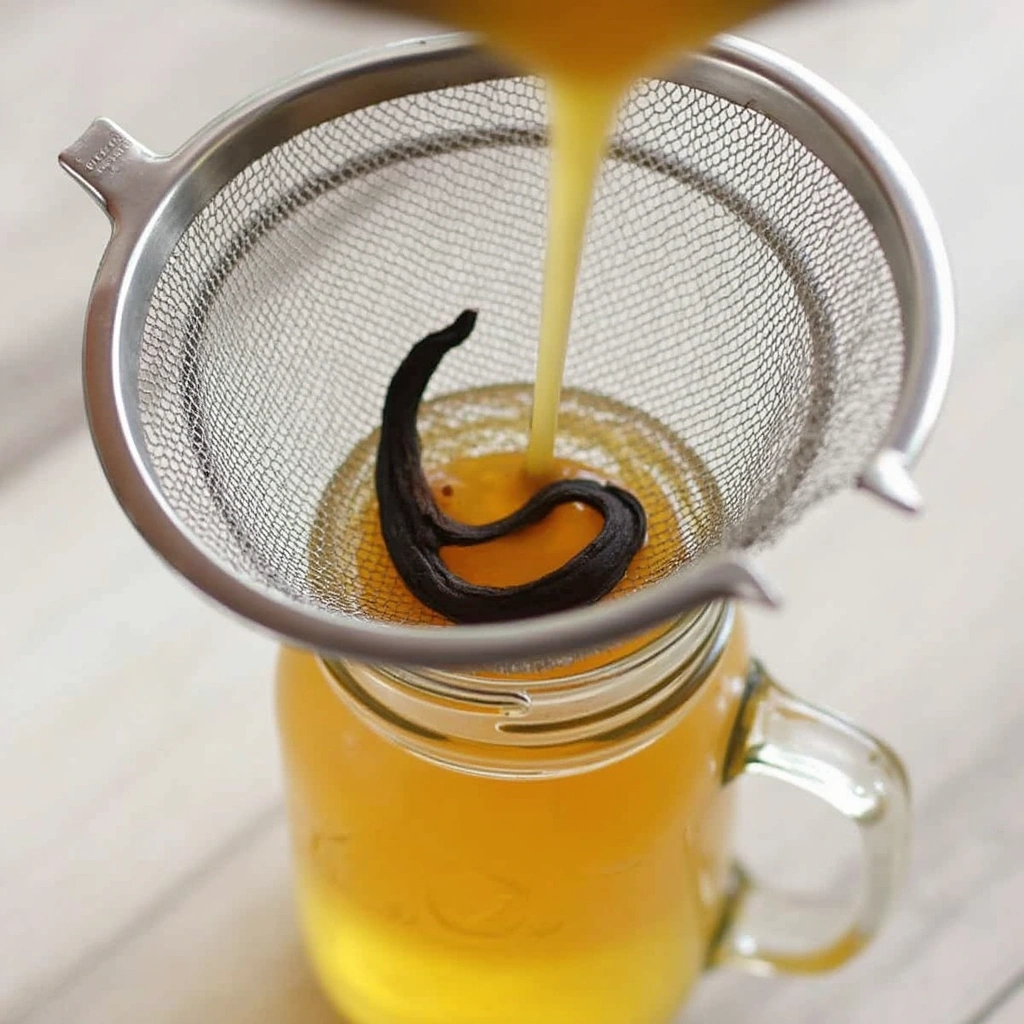
Using a fine mesh strainer, carefully strain the syrup into a clean jar or bottle.
This will remove the vanilla bean and any solid particles, leaving a smooth syrup.
Be sure to press down on the solids to extract as much liquid as possible.
Discard the solid remains after straining.
Step 8: Store and Use

Once strained, allow the syrup to cool completely before sealing the jar.
Store it in the refrigerator for up to two weeks.
To use, simply drizzle the syrup into your coffee or any beverage of choice.
Enjoy the rich vanilla flavor that elevates your drink.
Critical Timing and Temperature Guide
Simmering Time: The syrup should simmer for 5-7 minutes. Look for small bubbles forming and ensure it doesn’t boil too rapidly to avoid burning.
Cooling Time: Allow the syrup to cool for at least 10 minutes after removing from heat. This helps it thicken slightly before straining.
Storage Temperature: Store the syrup in the refrigerator. It should be kept at a consistent temperature to maintain its quality.
Pro Tips for Vanilla Syrup For Coffee Recipes Sweet Homemade Touch
• Ingredient Selection: Opt for high-quality vanilla extract and fresh vanilla beans for the most flavorful syrup.
• Preparation Secret: Allow the syrup to cool completely in the jar before sealing to prevent condensation.
• Temperature Management: Ensure the sugar is fully dissolved before heating to avoid crystallization.
• Texture Enhancement: Strain the syrup thoroughly to achieve a silky smooth texture.
• Flavor Layering: For a deeper flavor, consider adding a pinch of salt to balance the sweetness.
• Make-Ahead Strategies: Prepare the syrup in bulk and store it in small jars for easy use.
• Restaurant-Quality Finishing Touches: Drizzle the syrup over whipped cream on top of coffee beverages for a beautiful presentation.
• Equipment Optimization: Use a digital scale for precise sugar measurements.
Troubleshooting Common Issues
• Syrup Too Thick: This can happen if it simmers too long. To fix it, add a small amount of warm water to thin the consistency.
• Syrup Too Sweet: If the syrup is overly sweet, consider diluting it with more water or using less sugar next time.
• Flavor Too Weak: If the vanilla flavor is not strong enough, try adding more vanilla extract in the initial stages of heating.
• Crystallization: If you notice sugar crystals forming, ensure the sugar is fully dissolved before heating.
• Separation: If the syrup separates over time, give it a good shake before use to recombine.
Variations and Regional Differences
• French Vanilla Syrup: This variation includes additional cream for a richer texture, perfect for lattes.
• Spiced Vanilla Syrup: Adding cinnamon or nutmeg during simmering creates a warm, aromatic version ideal for the fall.
• Maple Vanilla Syrup: Substituting maple syrup for granulated sugar introduces a unique flavor profile with a hint of earthiness.
• Modern Interpretations: Incorporating flavored extracts like almond or hazelnut can create a fun twist on the classic syrup.
Food Science Behind the Recipe
• Solubility: Understanding how sugar dissolves in water is key to creating a perfectly blended syrup.
• Infusion: The process of extracting flavors from vanilla beans into the syrup relies on heat and time for optimal results.
• Concentration: Simmering reduces water content, concentrating flavors and creating a sweet liquid that enhances coffee.
Frequently Asked Questions
What’s the most common mistake people make when preparing vanilla syrup? Many forget to fully dissolve the sugar before heating, leading to graininess in the final product.
Can I prepare components of this dish in advance? Yes, the syrup can be made ahead of time and stored in the refrigerator for up to two weeks.
How do I adapt this recipe for dietary restrictions? Use a sugar substitute or agave syrup for a lower-calorie version.
What’s the best way to store and reheat leftovers? Store in an airtight container in the fridge; no need to reheat, just use cold.
Can I freeze this dish? Yes, you can freeze the syrup in ice cube trays for easy portioning.
What wine or beverages pair best with this dish? A rich espresso or a creamy latte complements the vanilla flavor beautifully.
How can I scale this recipe up for a crowd? Simply multiply the ingredients by the number of servings needed while keeping the same ratios.
What side dishes complement this recipe best? Pastries, such as croissants or muffins, pair excellently with coffee and vanilla syrup.
How do professional chefs elevate this dish for restaurant service? By incorporating garnishes like whipped cream or chocolate shavings for visual appeal.
Serving and Presentation Guide
• Traditional Presentation: Serve the syrup in a small glass bottle alongside a steaming cup of coffee, allowing guests to add as desired.
• Modern Plating Ideas: Drizzle the syrup artistically on top of a latte in a clear glass to showcase the beautiful color.
• Accompaniment Suggestions: Pair with fresh pastries or biscotti for a delightful coffee break.
• Special Occasion Presentation: Use decorative bottles for gifting or serve at brunch with a coffee bar setup.
Conclusion
I hope you enjoy making this delightful vanilla syrup for your coffee as much as I do.
It’s a simple recipe that adds a homemade touch to your daily routine.
Try it out and savor the rich flavors that elevate your beverage experience.
